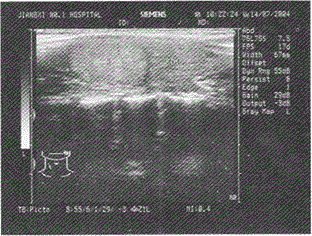How does an earthquake start?
What makes an earthquake happen? The rock of the earth’s crust (地壳) may have a “fault”, a kind of break in the surface. The blocks which make up the earth move, and sometimes this may cause the sides of the fault to move up and down or lengthways (纵向地) against each other. When one piece of rock starts to rub on another with great force, a lot of energy is used. This energy is changed into vibrations (振动) and it is these vibrations that we feel as an earthquake. The vibrations can travel thousands of kilometers and so an earthquake in Turkey may be felt in Greece.
What to do during an earthquake?
At school
As soon as the earthquake starts, students should get under the desks immediately and wait until the teacher tells them it is safe to come out. The teacher should, at the same time, go immediately to the teacher’s desk, get underneath (在……下面) it and stay there till the danger is over. Students must not argue with the teacher or question instructions.
As soon as the tremors (震动) stop, all students should walk towards the exit and go straight to the school playground or any open space such as a square or a park. They must wait there until the teacher tells them it is sale to go.
At home
If you are at home when the earthquake occurs, get immediately under the table in the living room or kitchen. Choose the biggest and strongest table you can find. You must not go anywhere near the window and don’t go out onto the balcony (阳台). Once the tremors have stopped, you can come out from under the table, but you must leave the building straight away. You should walk down the stairs and should not use the lift—there may be a power cut as a result of the earthquake and you could find yourself trapped inside the lift for hours.
In the street
If you are in the street when the earthquake takes place, do not stand near buildings, fences or walls—move away as quickly as possible and try to find a large open space to wait in. Standing under trees could also be dangerous.
正确答案及解析
正确答案
解析
地震是怎样发生的?
是什么让地震发生的?地壳的岩石可能有断层,断层是地壳表面的一种断裂。岩石块会造成地球移动,有时这种移动可能会导致断层的两边相互上下移动或者纵向地移动。当一块岩石和另一块岩石之间摩擦力很大时,大量的能量就被消耗了。这种能量会转化成振动,这种含有巨大能量的振动也就是我们所说的地震。这种振动可以传播数千公里,所以土耳其若发生地震,希腊都有可能有震感。
在地震期间要做什么?
在学校
一有地震,学生应该马上藏在课桌下面,直到老师告知他们安全了才可以出来。同时,老师应该立即蹲在讲台底下,直到危险过去。学生千万不能与老师争辩或质疑老师的指令。
一旦震动停止,所有的学生应该马上走向出口,直接去学校操场或任何开阔的地方,如广场或公园。他们必须在那儿等,直到老师告诉他们已经安全了才可以离开。
在家里
如果地震发生时你在家,应立即躲到客厅或厨房的桌子下面。选择你可以找到的最大的、最牢固的桌子。你不能去任何靠近窗户的地方,也不要走到外面的阳台上。一旦震动停止,你可以从桌子底下出来,但是必须马上离开大楼。你应该走楼梯而不是使用电梯——由于地震电梯可能会停电,你可能会被困在电梯里好几个小时。
在街上
当地震发生时,如果你在街上,不要站在建筑物、栅栏或墙附近——应尽可能快地找到一个大而开阔的地方立身,并在那里等待。站在树下也会是十分危险的。
你可能感兴趣的试题
女性,38岁。发现颈部增粗3年,无明显不适。超声检查见右叶甲状腺内单发结节,声像图如下,最可能的诊断为

-
- A.单纯性结节性甲状腺肿
- B.甲状腺腺瘤
- C.甲状腺囊肿
- D.甲状腺癌
- E.亚急性甲状腺炎
- 查看答案
女性,22岁。查体发现胆囊大小为6.8cm×2.7cm,内见1.2cm×1.0cm中等回声结节,与囊壁相连,彩超检查其内可见血流,最可能的诊断是
-
- A.胆囊非肿瘤性息肉
- B.胆囊腺瘤
- C.胆囊结石
- D.胆囊憩室
- E.胆囊增大
- 查看答案
下列肥厚型心肌病超声心动图表现的叙述,不正确的是
-
- A.室间隔基底部增厚可导致左心室流出道狭窄
- B.收缩期二尖瓣CD段呈吊床样改变
- C.收缩期左心室流出道狭窄处可检出高速血流
- D.收缩中晚期主动脉瓣可部分关闭
- E.室间隔与左心室后壁增厚,且比值>1.3意义较大
- 查看答案
慢性输卵管积水与盆腔静脉曲张的超声鉴别,最有帮助的是
-
- A.双侧附件区出现管状无回声结构
- B.多为囊性结构
- C.彩超附件区管状无回声区内见静脉血流
- D.肿块内部呈明显无回声区
- E.与子宫周围粘连严重时可与子宫直肠凹陷积液连成一片,包围子宫
- 查看答案
急性化脓性胆管炎的超声表现,正确的是
-
- A.胆管壁清晰,壁厚不超过2mm
- B.胆管扩张,管腔内见密集状、絮状回声
- C.肝外胆管扩张,肝内胆管无显著扩张
- D.胆总管内径一般不超过10mm
- E.胆管扩张,管腔内淤积胆汁透声好
- 查看答案